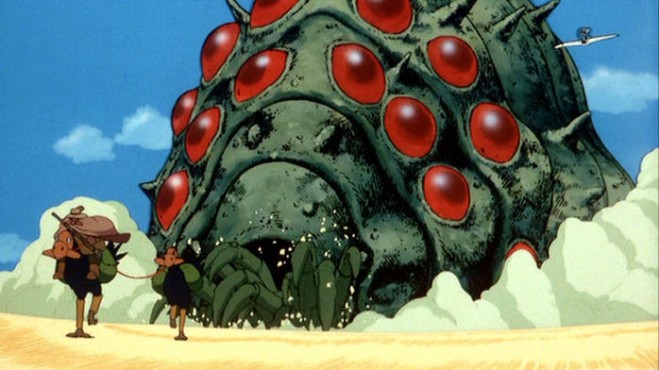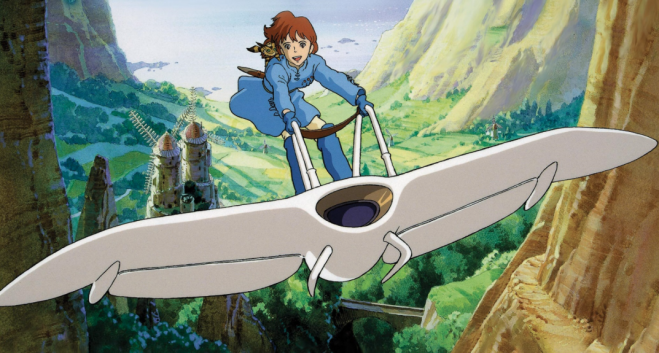
Back in the early 90s, my family used to visit a small-time video store in Kirkland, WA called “Critic’s Choice”. There you could get all the latest releases on tape or even fancy schmancy laserdisc. As a child I alternated between renting a handful of classics; Milo and Otis, DuckTales the Movie, Gargoyles, but perhaps my most unusual choice was a film called “The Warriors of the Wind”. Before I go any further, just look at the original cover to Warriors of the Wind. Pretty awesome huh? It’s like if Star Wars and He-Man had a sexy baby. Though whenever I popped this movie into the VCR I was always confused. Despite the cover, Warriors of the Wind is not about a Luke Skywalker-type that rides a giant sand worm while fighting some kind of alien-ghost with a lightsaber. Warriors of the Wind isn’t even the actual title, it’s Nausicaä of the Valley of the Wind and it’s the beginning of Hayao Miyazaki’s storied career.
Nausicaä was not Miyazaki’s first animated feature, that distinction belongs to The Castle of Cagliostro (1979), featuring the popular Manga character Lupin. Actually, Nausicaä wasn’t even the first Studio Ghibli film, being produced before the company was founded. Yet, calling Nausicaä Miyazaki’s first true Ghibli film feels apt. Adapted from Miyazaki’s 1980s manga of the same name, Nausicaä is an epic adventure story. It’s a film with whimsy, magic, strong characters (particularly strong women), beautiful animation, and an overarching message of peace. All of this is important because these are the characteristics that would go on to define the rest of Miyazaki’s career.
Nausicaä is set in the distant aftermath of a nuclear holocaust that has torn apart kingdoms and ravaged the lands. Nausicaä is the princess of the Valley of the Wind, a humble kingdom that lives in delicate balance with the nearby toxic jungle. Within the mysterious jungle lies, “The Ohm”, gigantic insects capable of mass destruction. The Valley is soon attacked by the stronger Tolmekian Kingdom in an attempt to destroy the toxic jungle and start society over again. To ensure success on their attack of the toxic jungle, the Tolmekians unearth a giant monster warrior (the same kind responsible for the initial holocaust), but are the Ohm and the toxic jungle really destroying the land? Or are they saving it? It is only through Nausicaä’s connection with nature that she can uncover the truth and take a stand against warring kingdoms.
The plot to Nausicaä is dense with detail but not overly complicated. The events of the film unfold in a very organic way, much like a classic fairy tale. In Nausicaä, Miyazaki matches an exquisite balance between action and emotion. Nausicaä is likable and graceful, but also kind of a badass (especially when she’s riding her hoverboard). The science-fiction inspired insects are beautifully animated but still intimidating. Additionally, Joe Hisaishi’s score accentuates all the emotional moments, even if it’s occasionally riddled with cheesy 1980s drums and synths.
Nausicaä of the Valley of the Wind was an extremely satisfying start to my Miyazaki-fest. The film has all the fantasy and powerful storytelling that have defined Miyazaki over his fortysomething years in animation. I can also add that Nausicaä is a much more enjoyable experience than its choppy American re-edit, “Warriors of the Wind”. Maybe that film reminds me of my childhood but watching the real cut makes me feel like I’m living an even better childhood. This is a film that captures the imagination and a film I will not soon forget.
P.S. Voice actors in the 2005 U.S. Dub include Alison Lohman, Patrick Stewart, Uma Thurman, Edward James Olmos, Mark Hamill, and… Shia LaBeouf? All his lines were most likely plagiarized.


